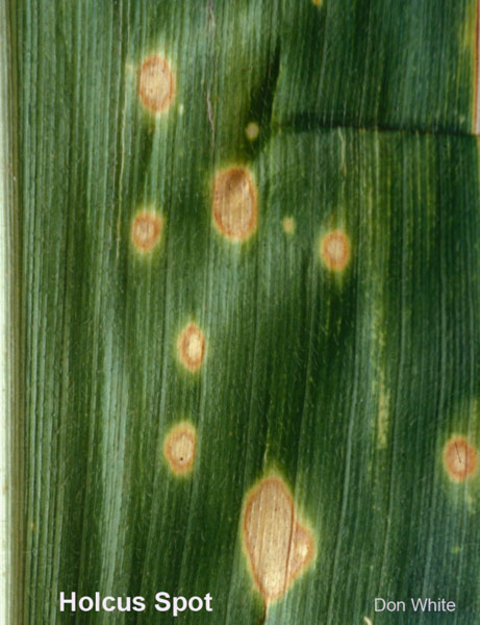Holcus spot is a bacterial disease that occurs occasionally on young corn and is usually not very damaging.
Symptoms
Symptoms of holcus spot first appear as water-soaked, dark green lesions near the tips of lower leaves. They then develop into round or elliptical, tan to white spots that are 1/8 to 1/4 inch in diameter. Red to brown margins develop around the spots, which may be surrounded by yellow halos. Symptoms can be confused with damage from paraquat.
Conditions and timing that favor disease
This disease typically develops early in the season following high winds and thunderstorms. Disease development is favored by prolonged wet weather and warm temperatures (76 to 86 degrees F).
Causal pathogen
The pathogen is a bacterium called Pseudomonas syringae pv. syringae. It overwinters in crop debris. The pathogen has a wide host range including many grasses and dicots. It can have ice nucleating activity that may enhance frost injury to corn leaves.
Disease management
This disease is best managed by crop rotation and tillage where appropriate.
Reviewed in 2018


